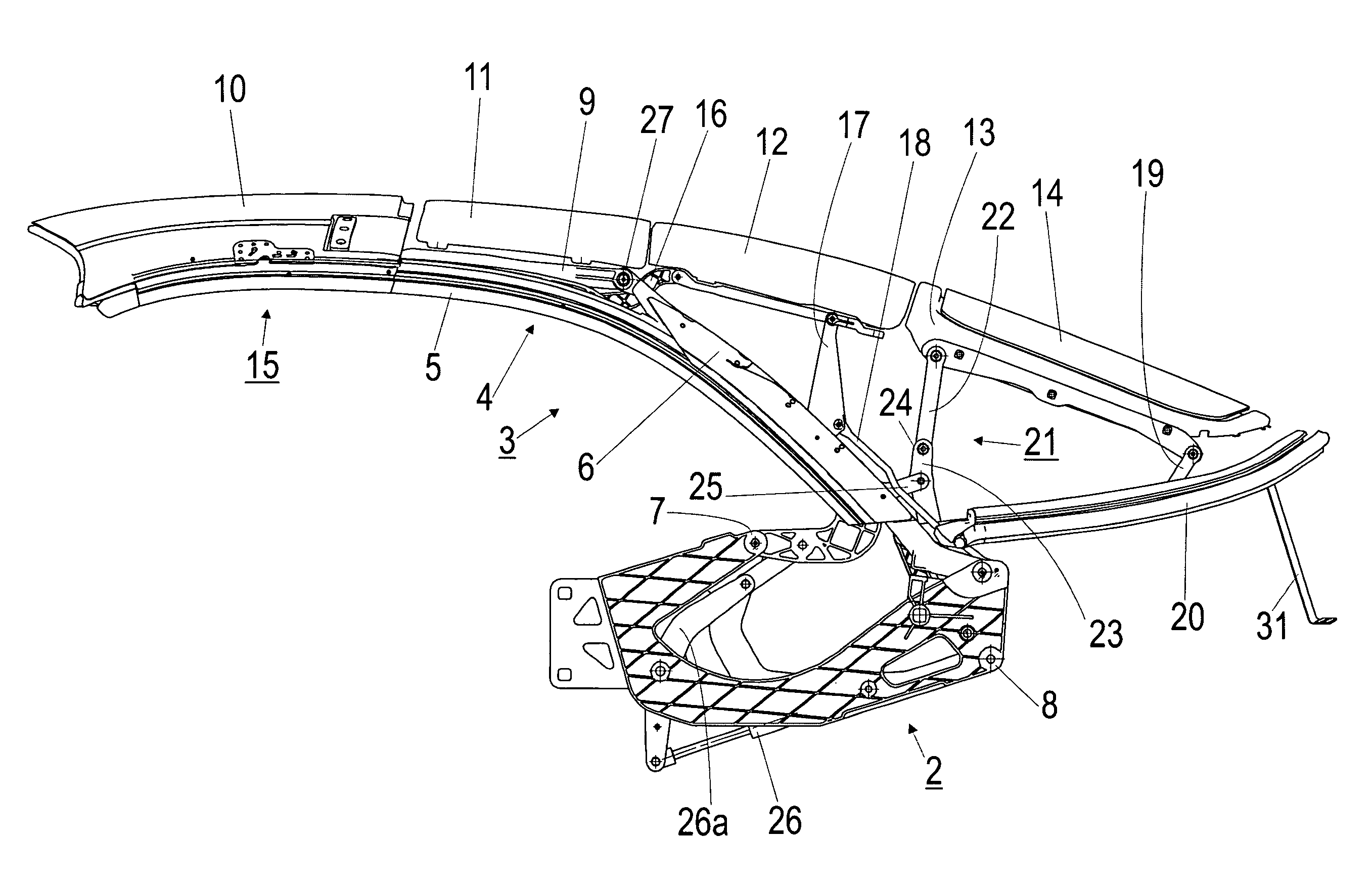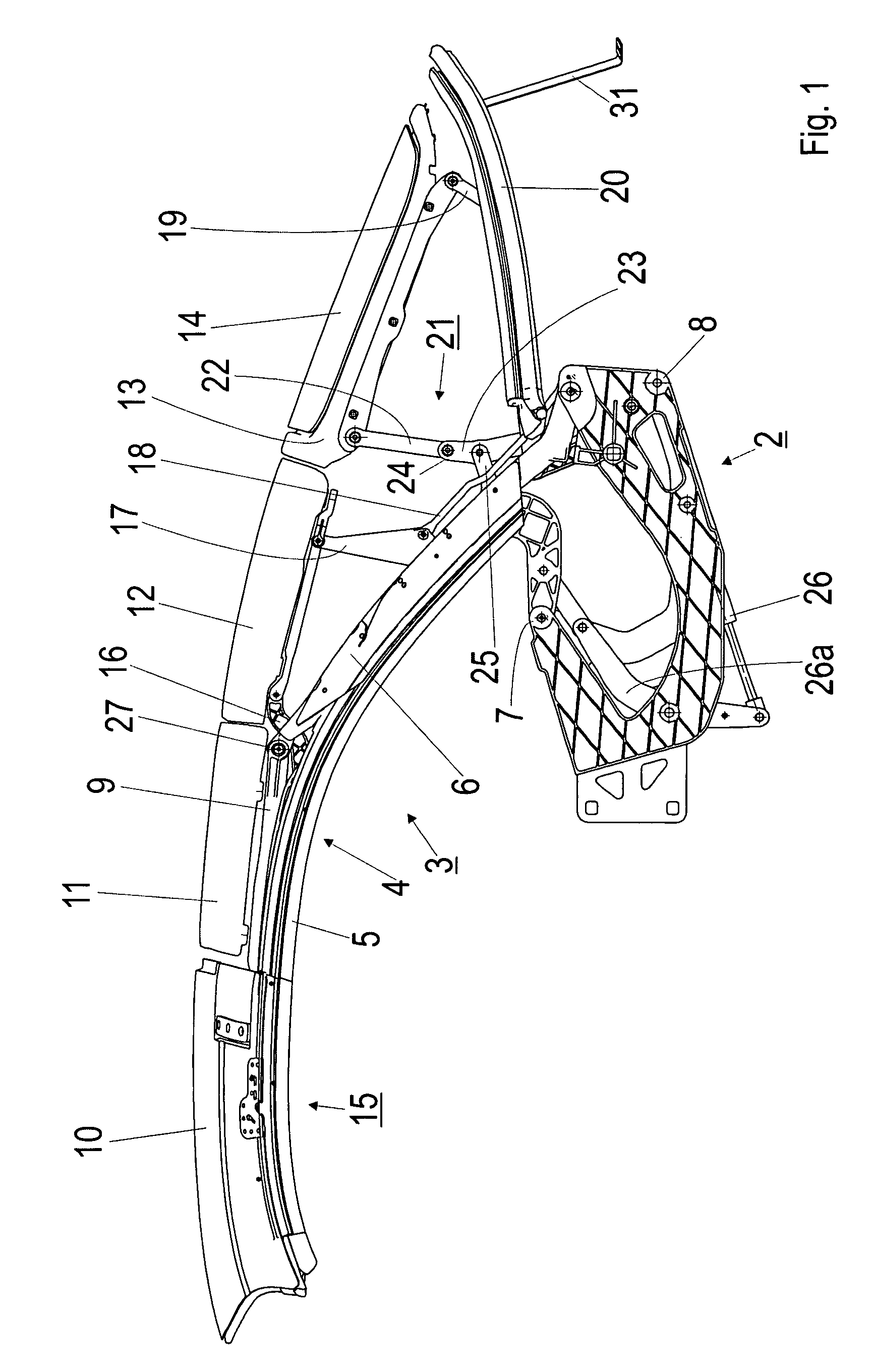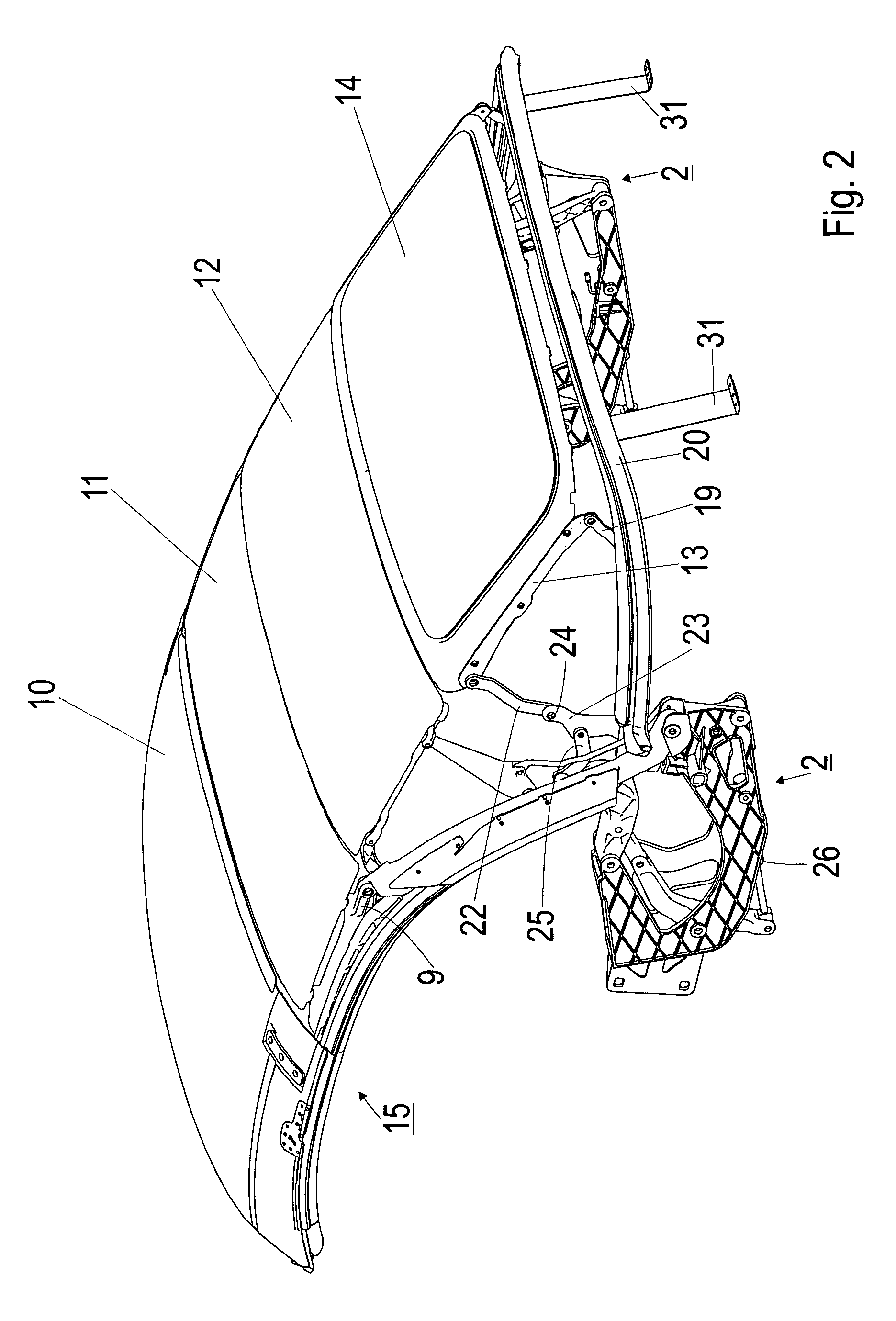Top for a convertible
a convertible and top technology, applied in vehicle sealing arrangements, engine seals, roofs, etc., can solve the problems of large construction space being occupied by the top, surface bow jamming or rattling, and the top occupies a relatively large amount of construction space. , to achieve the effect of simple kinematic structure of a tensioning bow
- Summary
- Abstract
- Description
- Claims
- Application Information
AI Technical Summary
Benefits of technology
Problems solved by technology
Method used
Image
Examples
Embodiment Construction
[0047]A top according to the invention is explained in detail below with regard to an operating principle and the associated kinematic structure of the links in a preferred embodiment with reference to FIG. 1 to FIG. 11.
[0048]FIG. 1 shows a top 1 according to the invention in a side view with its essential elements. A main bearing unit 2 to which a main link mechanism 3 is connected in an articulated manner is fastened in a vehicle body (not illustrated). The main link mechanism 3 is designed as a main four-bar linkage 4 which has a front link in the form of a “main pillar”5 and a rear link in the form of a “main link”6. The main pillar 5 and the main link 6 are coupled to the main bearing unit 2 via joint eyes 7, 8 and are connected to each other at their ends opposite the main bearing unit 2 by means of a coupling link 9.
[0049]The top 1 according to the invention comprises a front bow 10, a first surface bow 11, a second surface bow 12 and a rear window frame 13 in which a rear wi...
PUM
 Login to View More
Login to View More Abstract
Description
Claims
Application Information
 Login to View More
Login to View More - R&D
- Intellectual Property
- Life Sciences
- Materials
- Tech Scout
- Unparalleled Data Quality
- Higher Quality Content
- 60% Fewer Hallucinations
Browse by: Latest US Patents, China's latest patents, Technical Efficacy Thesaurus, Application Domain, Technology Topic, Popular Technical Reports.
© 2025 PatSnap. All rights reserved.Legal|Privacy policy|Modern Slavery Act Transparency Statement|Sitemap|About US| Contact US: help@patsnap.com



